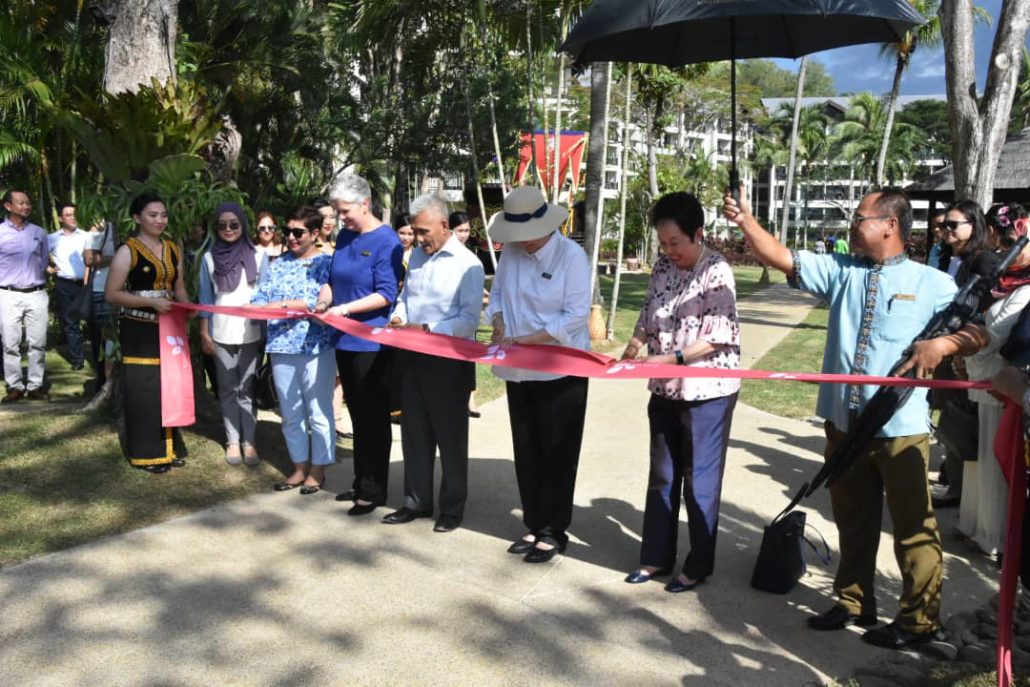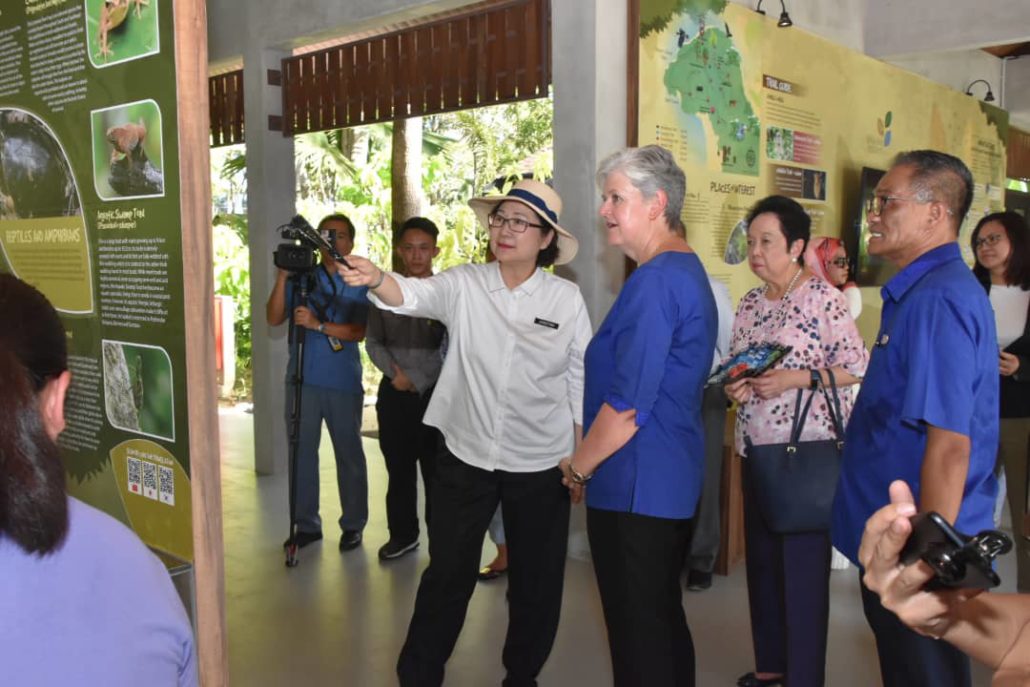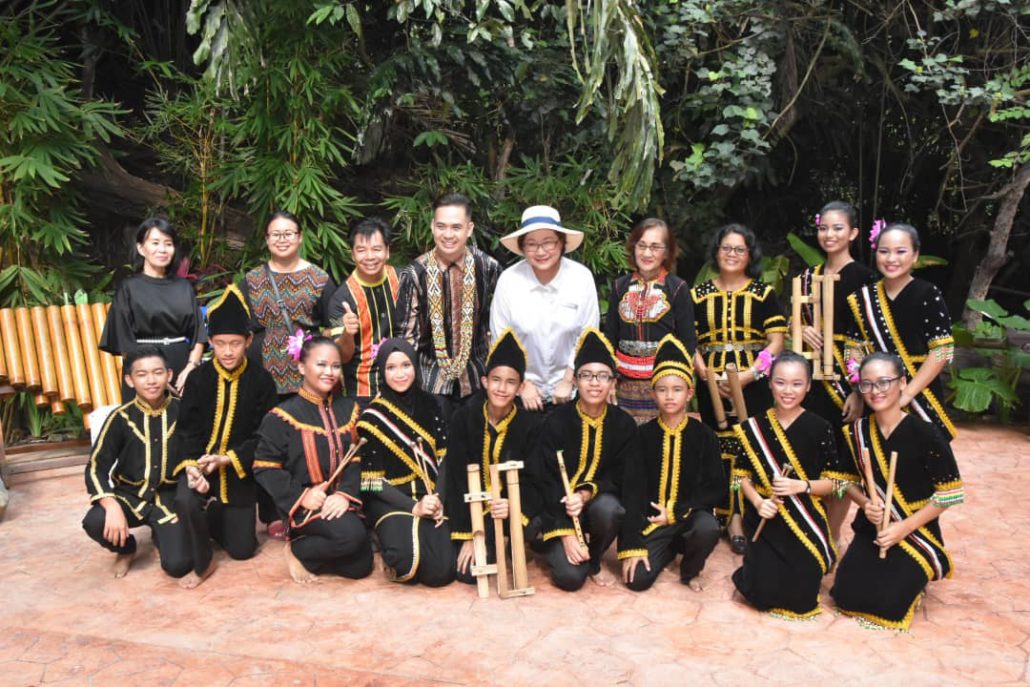Trainee STB/KePKAS2018-07-16T15:56:29+08:00KOTA KINABALU: Emin Madi’s new release English book titled “The Green Gold of Borneo (GGoB)”, is not only an adventure-packed documentary fiction, but also provides an insight into Sabah’s phenomenal achievement in forest conservation efforts.
The protagonist of the 145-page literary work is a strong-willed journalist obsessed to uncover the secrets of the unexplored saucer-like summit in the middle of the famous Maliau Basin Conservation Area (MBCA), also known as Sabah’s Lost World.
The fictional journalist did not heed a Murut shaman’s advice and later encountered unusual happenings and strange events in very unlikely situations.
“In many ways, although the plot is mostly fictionalised, GGoB is all about natural environment, particularly the fate of the last remaining undisturbed rain forest in Malaysia and Sabah in particular.
“I came to realise that natural wonders, and in this case the totally protected forest in Sabah, is a very interesting topic for book writing.
“I was very fortunate to have participated in many resource and wildlife surveys inside Sabah’s last remaining natural wonders and I thought I should write something more interesting, such as documentary-adventure-fiction.
“It took me the whole year of 2016 to complete the manuscript for GGoB , after which my former colleague, Zahir Ahmad, edited the first copy before sending it to the UK-based Austin Macauley Publishers,” the veteran journalist told Bernama.
The Bernama freelance reporter’s first foray into environmental reporting was in 1980’s when he participated in a scientific expedition in the now world renowned Danum Valley Conservation Area in Lahad Datu, Sabah, involving local and foreign researchers, including the Royal Society, UK.
In 2013, Emin, 69, who hails from Kampung Bayangan, Keningau, Sabah, spent 10 days in the deep jungle of MBCA with local researchers who were carrying out resource and wildlife survey.
“It was at Maliau Basin that I felt a deep urge to write an environmental-based documentary fiction, especially after some expedition participants related to me many mysterious events that took place around the area.
“So I got an idea to start writing GGoB using MBCA as a central theme and also based on my own experiences working alongside scientists and researchers.
“From my own observation, the findings from the field work are very important as it could be used to communicate using facts and information about the stature of Sabah’s protected forest.
“On top of that, I was also very motivated by the tremendous and commendable efforts undertaken by the Sabah Forestry Department with the strong support of the previous state government to protect the state’s natural heritage.
“Moving forward, I hope the current government will have strong commitment to protect our pristine and undisturbed forest as well as to continue and encourage more research activities and international research collaboration,” he said.
As at November 2016, Sabah’s Totally Protected Areas (TPAs) was 1,874,061 hectares or 25.46 percent of the state total land area.
In 1997, the Sabah State Assembly elevated the Maliau Basin Conservation Area into Class 1 Protection Forest Reserve and increased its size from 39,000 to 58,000 hectares to include the outer northern and eastern escarpments and Lake Linumunsut, the largest lake in Sabah.
According to record, Maliau Basin was spotted in 1947, when a British pilot flying from the West Coast of Sabah to Tawau in the east coast, nearly crashed into the steep cliffs rising over 915 meters above the jungle floor.
Emin, a former Press Secretary in a Federal Ministry, has also authored two environmental-based fictions in Malay language. -Bernama
Source: The Borneo Post







 On the 11 October 2018, Honourable Datuk Christina Liew attended the launching of the new Rasa Ria Reserve managed by Shangri-La’s Rasa Ria Resort & Spa.
YB Datuk Christina Liew menghadiri majlis perasmian Rizab Rasa Ria yang diusahakan oleh Shangri-La's Rasa Ria Resort & Spa pada 11 Oktober 2018.
On the 11 October 2018, Honourable Datuk Christina Liew attended the launching of the new Rasa Ria Reserve managed by Shangri-La’s Rasa Ria Resort & Spa.
YB Datuk Christina Liew menghadiri majlis perasmian Rizab Rasa Ria yang diusahakan oleh Shangri-La's Rasa Ria Resort & Spa pada 11 Oktober 2018.